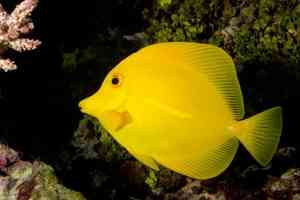by James Randolph
They pirouette like dancers through the water in aquariums of all sizes at my local pet store. The colorful salt- water fish—damsels and clown fish—hold customers’ gazes the longest, and I marvel at the power these aquatic acrobats have to charm and calm us. But chances are these tiny fish once called the ocean home—and that’s bad news for corals, which need reef fish to stay healthy.
Americans buy more than half of the saltwater aquarium fish sold worldwide, according to the U.S. Fish and Wildlife Service. While some importers ensure their suppliers catch fish responsibly, many import from collectors that dump poisons such as cyanide, bleach or gasoline into the water to stun fish and make collecting easier. Some even crush the slow-growing corals to capture hiding fish. The result is rampant habitat destruction leading to ecosystem degradation and loss. “The ornamental coral reef wildlife trade is a large and growing problem, but it is a problem that we can solve,” says Daniel Thornhill, Defenders’ coral reef scientist.
Unlike some other countries, the United States protects coral by law, but resident fish are still fair game, and they pay a steep price. Take the yellow tang in Hawaii. In recent years, the aquarium trade has decimated the wild population, which had declined by almost half in the last decade in areas still open to collection. That’s one reason Defenders is working to ensure U.S. buyers only import coral reef fish, corals and invertebrates that are collected sustainably.
“As the world’s largest importer of ornamental coral reef wildlife, we have the opportunity to improve the sustainability of reefs throughout the world,” says Thornhill. “And balanced fisheries management is in everyone’s best interest.”
That’s because reefs also help sustain life above the waves. They protect coastal communities and beaches from storms and they support tourism, generating billions of dollars and millions of jobs in more than 100 countries. In Hawaii, for example, reefs reel in more than $300 million from tourism each year. Many reef species also hold unique medicinal compounds used in treatments for cardiovascular disease, ulcers, leukemia and skin cancer.
Back at the pet store, I watch the yellow tang hovering behind a sign reading, “On Sale $40,” and wonder when enough people will realize this little fish is worth so much more than that.
Only select articles from Defenders are available online. To receive 4 issues annually of the full award-winning magazine, become a member of Defenders of Wildlife!

